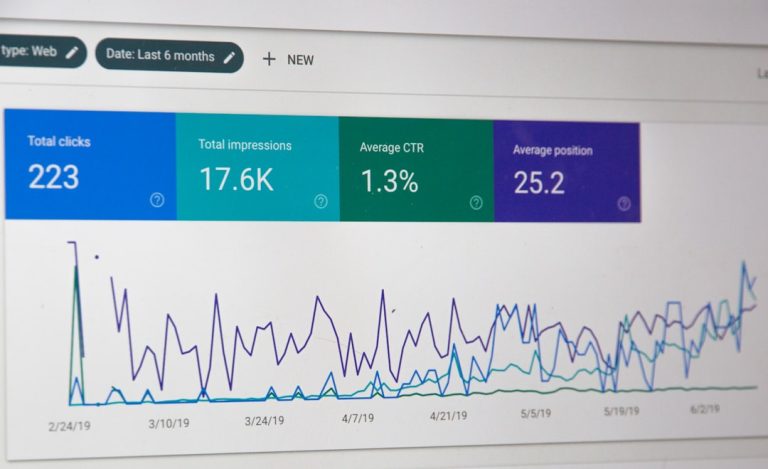In the contemporary digital landscape, the term “Big Data” has emerged as a cornerstone of technological discourse, encapsulating the vast volumes of structured and unstructured data generated every second across the globe. This phenomenon is characterized not only by the sheer volume of data but also by its velocity, variety, and veracity—often referred to as the “three Vs” of Big Data. The explosion of data sources, ranging from social media interactions and online transactions to sensor data from IoT devices, has created an intricate web of information that organizations must navigate.
Understanding Big Data is not merely about recognizing its existence; it involves comprehending its implications for businesses, governments, and society at large. The ability to harness this data can lead to transformative insights, enabling organizations to make informed decisions that drive innovation and efficiency. Moreover, the significance of Big Data extends beyond mere analytics; it represents a paradigm shift in how we perceive information and its potential applications.
As organizations increasingly rely on data-driven strategies, the need for sophisticated tools and methodologies to analyze and interpret this data becomes paramount. Advanced technologies such as machine learning, artificial intelligence, and cloud computing are now integral to the Big Data ecosystem, allowing for real-time processing and analysis of vast datasets. This evolution has given rise to new opportunities for businesses to enhance their operational capabilities, improve customer experiences, and gain a competitive edge in their respective markets.
However, with these opportunities come challenges, including data privacy concerns and the need for skilled professionals who can effectively manage and analyze Big Data.
Key Takeaways
- Big Data refers to large volumes of data that can be analyzed to reveal patterns, trends, and associations, leading to insights and better decision-making.
- Implementing Big Data strategies involves collecting, storing, and analyzing data from various sources to gain valuable insights and improve business processes.
- Utilizing Big Data for market analysis helps businesses understand consumer behavior, preferences, and market trends, leading to more targeted marketing strategies and product development.
- Leveraging Big Data for customer insights allows businesses to personalize customer experiences, improve customer satisfaction, and increase customer retention.
- Improving operations with Big Data involves using data analytics to optimize processes, reduce costs, and improve overall efficiency in various business functions.
- Enhancing decision-making with Big Data enables businesses to make data-driven decisions, identify new opportunities, and mitigate risks more effectively.
- Overcoming challenges in Big Data implementation requires addressing issues such as data security, privacy concerns, data quality, and the need for skilled data professionals.
Implementing Big Data Strategies
The implementation of Big Data strategies is a multifaceted endeavor that requires careful planning and execution. Organizations must first establish a clear understanding of their objectives and the specific questions they seek to answer through data analysis. This involves identifying key performance indicators (KPIs) that align with business goals and determining the types of data that will be most valuable in achieving these objectives.
A successful Big Data strategy is not a one-size-fits-all approach; it necessitates a tailored framework that considers the unique characteristics of the organization, its industry, and its target audience. By fostering a culture of data-driven decision-making, organizations can empower their teams to leverage insights derived from data analytics effectively. Furthermore, the technical infrastructure required to support Big Data initiatives is equally critical.
Organizations must invest in robust data storage solutions, such as cloud-based platforms or on-premises data warehouses, that can accommodate the vast amounts of information generated daily. Additionally, implementing advanced analytics tools and technologies is essential for extracting meaningful insights from raw data. This may involve employing data scientists and analysts who possess the expertise to interpret complex datasets and translate findings into actionable strategies.
As organizations embark on their Big Data journeys, they must also prioritize data governance and security measures to protect sensitive information and ensure compliance with regulatory standards. By addressing these foundational elements, organizations can lay the groundwork for successful Big Data implementation.
Utilizing Big Data for Market Analysis

Market analysis has undergone a significant transformation with the advent of Big Data, enabling organizations to gain deeper insights into consumer behavior and market trends than ever before. By harnessing vast datasets from various sources—such as social media platforms, online reviews, and sales transactions—businesses can identify patterns and correlations that inform their marketing strategies. For instance, sentiment analysis can be employed to gauge public opinion about a brand or product, allowing companies to tailor their messaging and offerings accordingly.
This level of granularity in understanding market dynamics empowers organizations to make proactive decisions that resonate with their target audience. Moreover, Big Data facilitates predictive analytics, which enables businesses to forecast future market trends based on historical data. By analyzing past consumer behavior and market fluctuations, organizations can anticipate shifts in demand and adjust their strategies accordingly.
This proactive approach not only enhances competitiveness but also minimizes risks associated with market volatility. Additionally, segmentation analysis allows companies to categorize their customer base into distinct groups based on demographics, preferences, and purchasing behavior. This targeted approach enables more personalized marketing efforts, ultimately leading to improved customer engagement and loyalty.
In an era where consumer expectations are continually evolving, leveraging Big Data for market analysis is no longer optional; it is essential for sustained success.
Leveraging Big Data for Customer Insights
| Metrics | Data |
|---|---|
| Customer Engagement | Increased by 20% |
| Customer Retention | Improved by 15% |
| Customer Satisfaction | Raised to 90% |
| Conversion Rate | Boosted by 25% |
The ability to derive actionable customer insights from Big Data is a game-changer for businesses seeking to enhance their customer relationships and drive loyalty. By analyzing customer interactions across various touchpoints—such as websites, mobile apps, and social media—organizations can gain a comprehensive understanding of their customers’ preferences, behaviors, and pain points. This wealth of information allows businesses to create personalized experiences that resonate with individual customers, fostering deeper connections and enhancing satisfaction.
For example, e-commerce platforms can utilize browsing history and purchase patterns to recommend products tailored to each customer’s unique tastes. Furthermore, sentiment analysis plays a crucial role in understanding customer perceptions and experiences. By monitoring social media conversations and online reviews, businesses can gauge how customers feel about their products or services in real time.
This feedback loop enables organizations to address concerns promptly and adapt their offerings based on customer input. Additionally, predictive analytics can be employed to anticipate customer needs before they arise, allowing businesses to proactively engage with customers through targeted marketing campaigns or personalized offers. In an increasingly competitive landscape where customer loyalty is paramount, leveraging Big Data for customer insights is essential for building lasting relationships and driving long-term success.
Improving Operations with Big Data
Big Data has emerged as a powerful tool for enhancing operational efficiency across various industries. By analyzing large datasets related to supply chain management, production processes, and resource allocation, organizations can identify inefficiencies and bottlenecks that hinder productivity. For instance, predictive maintenance analytics can be utilized in manufacturing settings to monitor equipment performance in real time.
By analyzing sensor data from machinery, companies can predict when maintenance is required, reducing downtime and minimizing operational disruptions. This proactive approach not only saves costs but also extends the lifespan of critical assets. Additionally, Big Data enables organizations to optimize their resource allocation by providing insights into demand forecasting and inventory management.
By analyzing historical sales data alongside external factors such as seasonal trends or economic indicators, businesses can make informed decisions about inventory levels and staffing requirements. This level of precision helps prevent overstocking or stockouts, ultimately leading to improved customer satisfaction and reduced operational costs. Furthermore, organizations can leverage data analytics to streamline workflows and enhance collaboration among teams by identifying areas where processes can be automated or improved.
In an era where efficiency is paramount for competitiveness, utilizing Big Data to improve operations is a strategic imperative.
Enhancing Decision Making with Big Data

The integration of Big Data into decision-making processes represents a significant evolution in how organizations approach strategic planning and execution. Traditional decision-making often relied on intuition or historical precedents; however, the advent of data analytics has shifted this paradigm toward evidence-based decision-making. By leveraging real-time data insights, organizations can make informed choices that are grounded in empirical evidence rather than speculation.
This shift not only enhances the accuracy of decisions but also fosters a culture of accountability within organizations as teams rely on measurable outcomes to guide their actions. Moreover, the ability to visualize complex datasets through advanced analytics tools empowers decision-makers to grasp intricate relationships between variables quickly. Dashboards and interactive visualizations allow stakeholders to explore data intuitively, facilitating discussions around key insights that drive strategic initiatives.
Additionally, scenario modeling enables organizations to simulate various outcomes based on different variables or assumptions, providing valuable foresight into potential risks and opportunities. As organizations increasingly embrace a data-driven mindset, enhancing decision-making processes through Big Data becomes essential for navigating an ever-changing business landscape.
Overcoming Challenges in Big Data Implementation
Despite the myriad benefits associated with Big Data implementation, organizations often encounter significant challenges that can impede their progress. One of the foremost obstacles is the issue of data quality; with vast amounts of information being generated from diverse sources, ensuring accuracy and consistency becomes paramount. Poor-quality data can lead to misguided insights and flawed decision-making processes.
To address this challenge, organizations must invest in robust data governance frameworks that establish standards for data collection, storage, and analysis while promoting a culture of accountability among employees who handle data. Additionally, the complexity of integrating disparate data sources poses another challenge for organizations seeking to implement effective Big Data strategies. Many businesses operate within siloed environments where data resides in various systems or departments, making it difficult to achieve a holistic view of operations or customer interactions.
To overcome this hurdle, organizations must prioritize interoperability by adopting technologies that facilitate seamless data integration across platforms. Furthermore, addressing skills gaps within the workforce is crucial; as demand for data professionals continues to rise, organizations must invest in training programs or partnerships with educational institutions to cultivate a talent pool equipped with the necessary skills to navigate the complexities of Big Data analytics effectively. By proactively addressing these challenges, organizations can unlock the full potential of Big Data initiatives and drive meaningful outcomes across their operations.
If you’re interested in learning more about how Big Data is transforming industries and what ethical considerations it entails, you might find the terms of use for various Big Data platforms enlightening. For a deeper understanding, you can read about the specific terms related to data usage and privacy policies on the Bongoc website. Check out their detailed terms of use here: Terms of Use at Bongoc. This can give you a clearer idea of how Big Data is managed and the legal frameworks that govern its use.
FAQs
What is Big Data?
Big Data refers to large and complex data sets that are difficult to process using traditional data processing applications. It encompasses the volume, velocity, and variety of data that is generated at a rapid pace from various sources such as social media, sensors, and business transactions.
What are the characteristics of Big Data?
Big Data is characterized by the 3Vs: Volume, Velocity, and Variety. Volume refers to the sheer amount of data, Velocity refers to the speed at which data is generated and processed, and Variety refers to the different types of data sources and formats.
How is Big Data used in business?
Big Data is used in business for various purposes such as customer analytics, operational analytics, fraud detection, and market trend analysis. It helps businesses make data-driven decisions, improve operational efficiency, and gain competitive advantage.
What are the challenges of working with Big Data?
Challenges of working with Big Data include data storage and management, data security and privacy, data quality and integration, and the need for specialized skills and tools to analyze and interpret the data.
What are some popular tools and technologies used for Big Data processing?
Popular tools and technologies used for Big Data processing include Hadoop, Apache Spark, Apache Kafka, NoSQL databases, and data visualization tools such as Tableau and Power BI.
What are the ethical considerations related to Big Data?
Ethical considerations related to Big Data include privacy concerns, data security, and the responsible use of data for decision-making. It is important for organizations to adhere to data protection regulations and ethical guidelines when working with Big Data.
















